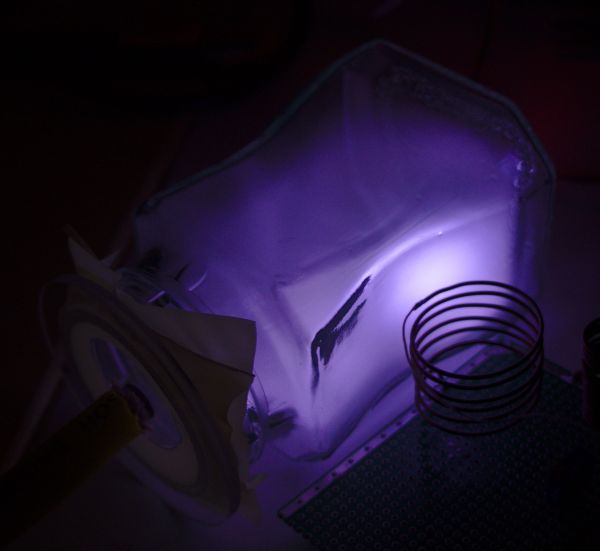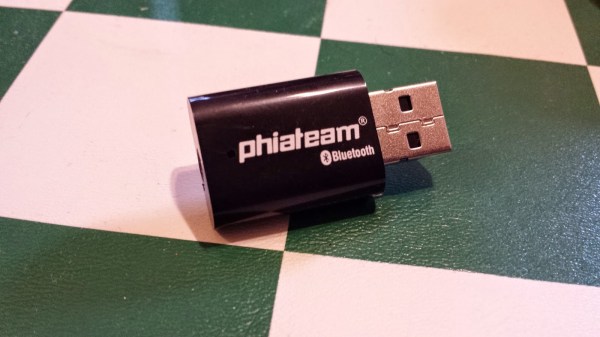Hackaday’s Trinket Everyday Carry Contest is heating up. In just one week we’ve already got over 30 entries! Many of the contenders are completely new open source projects based on the Pro Trinket. Our first drawing will be tonight, at 9pm EST. The first giveaway prize is a BLINK(1) MK2 from the Hackaday store. Make sure you have at least one project log and a photo up to be eligible for this week’s giveaway!
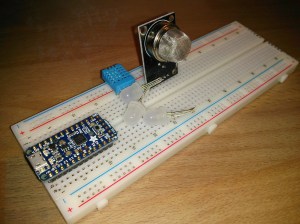 We can’t help but mention how awesome some of the entries are. [Georg Krocker] is taking on the problem of indoor air quality – not with a central sensor, but with a personal sensor that goes where you do. Sniffing Trinket is designed to monitor the air around the user. If the air quality drops, it will alert the user to open a window – or get the heck out. [Georg] has a few sensors in mind, but he’s starting with the MQ135 gas sensor and a DHT11 temperature/humidity sensor. If air quality starts to drop, 3 WS2812b LEDs will alert the user that there is a problem. The system can also be connected to a PC with USB for more accurate readings and logging.
We can’t help but mention how awesome some of the entries are. [Georg Krocker] is taking on the problem of indoor air quality – not with a central sensor, but with a personal sensor that goes where you do. Sniffing Trinket is designed to monitor the air around the user. If the air quality drops, it will alert the user to open a window – or get the heck out. [Georg] has a few sensors in mind, but he’s starting with the MQ135 gas sensor and a DHT11 temperature/humidity sensor. If air quality starts to drop, 3 WS2812b LEDs will alert the user that there is a problem. The system can also be connected to a PC with USB for more accurate readings and logging.
[Georg] has an aggressive schedule planned, with a custom “Trinket Shield” PCB being laid out and ordered next week. January 2 is fast approaching, so hurry up and get those boards designed!
 [Dr Salica] is taking a more humorous approach to personal space. The Portable Trollmaster 3000 is designed to surround its wearer in a bubble of “I Am Glad, ‘Cause I’m Finally Returning Back Home” aka “The Trololol song” as sung by Eduard Khil. [Dr Salica] plans to pair the Pro Trinket with the popular Sony MMR-70 FM transmitter. The Trinket is capable of playing back short audio clips, so with a bit of I2C magic, [Dr. Salica] will be able to hijack any nearby FM receiver, creating his own personal trollbox.
[Dr Salica] is taking a more humorous approach to personal space. The Portable Trollmaster 3000 is designed to surround its wearer in a bubble of “I Am Glad, ‘Cause I’m Finally Returning Back Home” aka “The Trololol song” as sung by Eduard Khil. [Dr Salica] plans to pair the Pro Trinket with the popular Sony MMR-70 FM transmitter. The Trinket is capable of playing back short audio clips, so with a bit of I2C magic, [Dr. Salica] will be able to hijack any nearby FM receiver, creating his own personal trollbox.
Do you have an idea for a great wearable or pocketable project? Check out the Trinket Everyday Carry Contest, and get hacking!


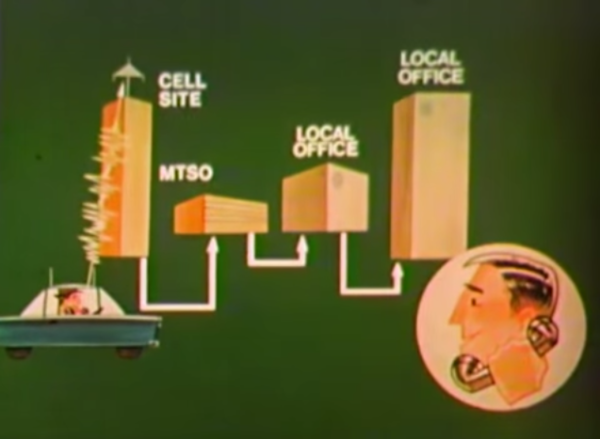
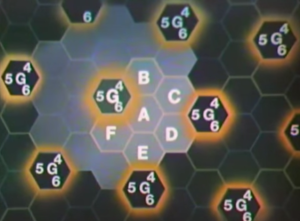 The FCC’s allocation opened a whopping 666 channels in the neighborhood of 850MHz. Bell Labs’ hexagonal innovation sub-divided the MSAs into cells, each with a radius of up to ten miles.
The FCC’s allocation opened a whopping 666 channels in the neighborhood of 850MHz. Bell Labs’ hexagonal innovation sub-divided the MSAs into cells, each with a radius of up to ten miles.
